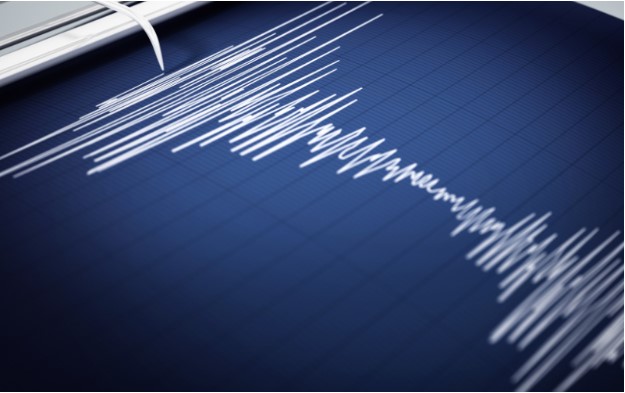Earthquakes are one of the most destructive natural disasters, causing devastation to buildings, infrastructure, and human lives. Their impact can be felt worldwide, with earthquakes occurring in countries like Japan, Indonesia, and Mexico. In the wake of such disasters, architects and engineers have been working tirelessly to create buildings that can withstand the seismic forces generated by earthquakes.
The importance of earthquake-resistant building design cannot be overstated. It saves lives and property and helps maintain the stability of communities and the economy. Buildings designed to resist earthquakes have been known to fare much better in the event of an earthquake, with a significantly lower likelihood of collapsing or sustaining damage.
This article will explore the fundamental principles of earthquake-resistant building design and how they are implemented in modern architecture. We will delve into how architects and engineers design buildings that can withstand seismic forces, including base isolation, damping systems, and structural reinforcement. We will also take a closer look at some examples of earthquake-proof buildings, examining their design features and how they have performed in real-world earthquake scenarios.
Ultimately, this article will give readers a better understanding of the importance of earthquake-resistant building design and how it can help protect lives and property. Through continued research and innovation, we can create buildings that are not only aesthetically pleasing but also able to withstand the destructive forces of nature.
Understanding Earthquake Forces

Earthquakes generate seismic forces that can cause significant damage to buildings and infrastructure. Seismic forces result from the ground shaking during an earthquake, which can cause buildings to sway, vibrate, or even collapse. Here are some key points to help you understand earthquake forces and their impact on structures:
Definition of Seismic Forces
Seismic forces are the forces that result from the movement of the earth’s crust during an earthquake. These forces can be divided into two main types:
Inertia Forces: Inertia forces are generated when a building tries to remain in its original position while the ground beneath it moves during an earthquake.
Shear Forces: Shear forces are the forces that are generated when the ground moves horizontally during an earthquake, causing the building to slide or topple.
How Seismic Forces Affect Buildings
Seismic forces can have a significant impact on buildings. The damage a building sustains during an earthquake depends on several factors, including its height, weight, and location. Here are some ways in which seismic forces can affect structures:
Structural Damage: Seismic forces can cause structural damage to a building, such as cracking, bending, or collapsing.
Non-structural Damage: Seismic forces can also cause non-structural damage to a building, such as broken windows, damaged finishes, and displaced contents.
Human Safety: Seismic forces can pose a significant risk to human safety, with falling objects and collapsing buildings being the most common causes of injury and death during an earthquake.
Explanation of How Seismic Waves Propagate Through Different Materials

Seismic waves propagate through different materials at different speeds and with different amplitudes. This can have a significant impact on the amount of damage a building sustains during an earthquake. Here are some key points to help you understand how seismic waves propagate through different materials:
Soft Soil: Soft soil can amplify seismic waves, causing them to have a more significant impact on buildings that are located on or near it.
Hard Rock: Hard rock can reflect seismic waves, causing them to bounce back and forth between the building and the ground, increasing the damage sustained by the building.
Damping Materials: Damping materials, such as rubber or steel, can absorb seismic energy, reducing the amount of damage sustained by a building.
Understanding seismic forces and how they affect buildings is crucial for creating earthquake-resistant building designs. By considering the factors that influence seismic forces, such as the location, height, and weight of a building, architects, and engineers can design buildings that can withstand earthquakes and protect human lives and property.
Design Principles for Earthquake-Proof Buildings
Earthquakes can cause immense damage to buildings, resulting in loss of life and property. Therefore, designing earthquake-proof buildings is of utmost importance. This article will discuss three fundamental principles of earthquake-proof building design: base isolation, damping systems, and structural reinforcement.
Base Isolation
Definition and explanation: Base isolation is a technique that involves isolating the building’s foundation from the ground using flexible pads or bearings. These pads or bearings allow the building to move horizontally during an earthquake, reducing the seismic forces transmitted to the structure.
How base isolation works: Base isolation decouples the building’s foundation from the ground. When an earthquake occurs, the building moves horizontally along with the foundation, but the pads or bearings absorb the energy and reduce the seismic forces transmitted to the building.
Advantages and disadvantages:
Advantages:
- Effective in reducing seismic forces
- Low maintenance costs
- Can be retrofitted into existing buildings
Disadvantages:
- High initial cost
- Requires specialized expertise for design and installation
- May increase building height
Damping Systems
Definition and explanation: Damping systems absorb and dissipate energy during an earthquake as heat. These devices are typically installed in the building’s structure and help to reduce the building’s motion during an earthquake.
How damping systems work: Damping systems work by converting the kinetic energy of the building into heat. This is achieved using viscoelastic, friction, and tuned mass dampers.
Advantages and disadvantages:
Advantages:
- Can be retrofitted into existing buildings
- Effective in reducing seismic forces
- Low maintenance costs
Disadvantages:
- High initial cost
- Requires specialized expertise for design and installation
- May increase building weight
Structural Reinforcement
Definition and explanation: Structural reinforcement involves using steel, concrete, and composites to strengthen a building’s structure against seismic forces. This can include adding additional structural elements or upgrading existing ones.
Types of Reinforcement Materials
- Steel: used for beams, columns, and braces
- Concrete: used for shear walls, columns, and foundation
- Composites: used for strengthening walls and floors
How Reinforcement Is Integrated into Building Design
- Structural analysis and modeling
- Design of reinforcement elements and their connections
- Installation and construction
Structural reinforcement is an effective method for earthquake-proof building design. It can increase the building’s strength, stiffness, and ductility, allowing it to withstand seismic forces. Furthermore, using advanced materials and techniques can result in lightweight, cost-effective reinforcement solutions.
The earthquake-proof building design is a complex and multifaceted field involving many principles and techniques. However, base isolation, damping systems, and structural reinforcement are vital principles that can significantly increase a building’s seismic performance. By implementing these principles in building design and construction, we can create safer and more resilient buildings that can withstand the destructive forces of earthquakes.
Components of an Earthquake-Proof Building

Designing an earthquake-proof building involves more than just incorporating a few fundamental principles. Instead, it requires careful consideration of various factors, from the building materials to implementing safety features.
Building Materials
The materials used in constructing an earthquake-proof building must withstand the forces generated by seismic activity. Some of the critical considerations when selecting building materials include:
- Strength and stiffness: The building must be solid and stiff enough to resist seismic forces, with the ability to withstand compression, tension, and shearing forces.
- Ductility: The materials must have enough flexibility to bend and deform under stress rather than breaking or shattering.
- Lightweight: Lightweight materials can help to reduce the building’s mass and prevent excessive movement during an earthquake.
Some of the common materials used in earthquake-proof buildings include:
- Reinforced concrete
- Steel
- Masonry
- Timber
- Composites
Structural Design
The structural design of an earthquake-proof building must take into account the forces generated by seismic activity. Some of the critical considerations when designing the structure of an earthquake-proof building include the following:
- Load-bearing walls: Load-bearing walls can help to distribute seismic forces throughout the building, reducing the stress on individual structural elements.
- Shear walls: Shear walls can help to resist lateral loads, reducing the building’s motion during an earthquake.
- Moment-resisting frames: Moment-resisting frames are designed to resist bending forces and provide lateral stability.
- Cross-bracing: Cross-bracing can help to increase the building’s resistance to torsion and bending forces.
Non-structural Elements
Non-structural elements refer to the non-load-bearing parts of the building, such as partitions, cladding, and equipment. These elements can also contribute to the building’s seismic performance, and some of the key considerations include the following:
- Flexibility: Non-structural elements should be flexible enough to deform under seismic forces without causing damage to the building.
- Securing: Non-structural elements should be secured to the building’s structure to prevent them from becoming projectiles during an earthquake.
- Separation: Non-structural elements should be separated from the building’s structure to prevent damage to the building in the event of failure.
Safety Features
Finally, earthquake-proof buildings should also include safety features that can help to protect occupants during an earthquake. Some of the key safety features include:
- Emergency lighting and signage
- Fire suppression systems
- Evacuation routes and plans
- Safe areas and shelters
- Seismic sensors and alarms
Exploring different architectural drafting techniques in designing earthquake-proof buildings involves considering many factors, from building materials to implementing safety features. By taking a holistic approach to earthquake-proof building design, we can create buildings that are resilient to seismic activity and safe and secure for occupants.

